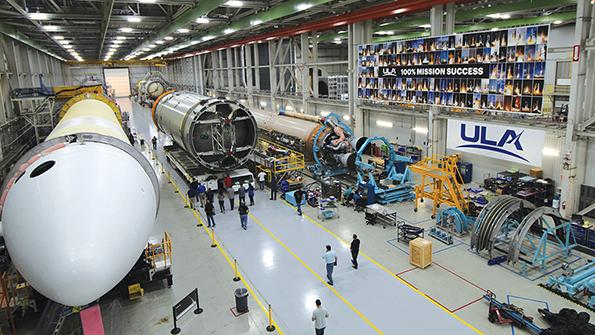Opinion: Congress Should Consider Aerospace As Infrastructure

President Joe Biden’s $2.3 trillion American Jobs Plan is designed to create millions of good jobs, rebuild our country’s infrastructure, promote long-term economic recovery and keep the U.S. competitive. The members of the American Institute of Aeronautics and Astronautics (AIAA)—the world’s largest technical society dedicated to the aerospace profession—are proud of the advances in aerospace technology. These capabilities over the past century have been essential to economic growth and national security.
Lawmakers should recognize that aerospace means infrastructure, innovation and jobs. The sector should be an integral part of their proposal to accelerate innovation in the 21st century. It is in their hands to ensure the U.S. continues to fund research to achieve net-zero carbon emissions by 2050, build and improve the air transportation system and grow the space economy to benefit fully from U.S. aerospace leadership.
Aerospace is infrastructure—both on land and sea, as well as in air and space. The multitrillion-dollar aerospace enterprise includes major corporations, small businesses, federally--funded laboratories and research universities, as well as airports and military installations. Its extensive presence in many states includes a vast supply chain across the country found in most congressional districts. All these stakeholders are focused on innovation and implementation, making sure the nation stays on the cutting edge of research and development (R&D), production and operations.
Aerospace is jobs. According to the Aerospace Industries Association, nearly 2.2 million jobs were directly attributed to the aerospace and defense sector in 2019, before the onset of COVID-19. Salaries were 46% higher than the comparable national average for all workers. These high-paying jobs support hardworking American families. Additionally, the sector positively impacts communities across the nation with nearly $64 billion in federal, state and local tax revenue.
The American Jobs Plan, as proposed, boosts manufacturing, invests in critical technologies and supports workforce development—efforts that would sustain the vitality of the aerospace community during these challenging times, thus ensuring U.S. leadership in this robust sector. One of the plan’s most important elements is Biden’s call for intensive investment in the workforce of tomorrow, including assisting underserved and underutilized groups, funding apprenticeship programs for middle and high school students and creating job training programs at community colleges. The U.S. aerospace industry faces an aging workforce, gender gap, lack of diversity and significant hiring and retention challenges. Our industry needs more STEM-literate students readily adaptable to rapidly changing challenges and technologies.
Biden’s plan also calls for public investment in R&D and technologies of the future. While there has been a recent uptick in federal R&D funding and the U.S. still represents nearly half of global aerospace R&D spending, other nations continue to close the gap by investing significantly in technologies critical to aerospace and defense.
According to analysis from the American Association for the Advancement of Science, federal R&D spending as a percentage of gross domestic product (GDP) dropped from 1.9% in the mid-1960s, at the height of the Apollo program, to less than 0.7% in 2018. In comparison, China’s research intensity has increased sharply, with spending climbing 10.3% to 2.44 trillion yuan ($378 billion) and accounting for 2.4% of GDP in 2020.
It is imperative that Congress make investments in U.S. aerospace R&D through this legislation. The result will be innovation that leads to new and better products that will create additional jobs, while providing economic and physical security. The institute’s members agree. Based on a soon-to-be-released AIAA study on the state of the aerospace industry, 49% of respondents believe Congress’ top priority must be investment in foundational experimental and computational capabilities for research, followed closely by 46% of respondents encouraging Congress to maintain predictable and sustainable budgets to assure timeliness and efficiency.
Lawmakers from both parties must come together and craft a bipartisan bill that includes programs and funding that create and maintain the infrastructure and workforce needed for continued U.S. aerospace advances. Such action will enable us to compete successfully against the increasing capabilities of nations across the globe. As the president emphasized in his recent address to lawmakers, “The rest of the world is not waiting for us. . . . Doing nothing is not an option.” AIAA urges the 117th Congress to ensure that the second 100 years of aerospace is as innovative and impactful as the first 100 years.
Dan Dumbacher is executive director of the American Institute of Aeronautics and Astronautics.
The views expressed are not necessarily those of Aviation Week.
Comments
When a company buys back its own shares, it is telling investors that it can not come up with a profitable way to use the money. Of course buybacks also raise the average price of a company's shares which gives executives their multi-million dollar bonuses.
Without a matching requirement that prohibits share buybacks, there is no guarantee that US government "infrastructure" spending on US A&D will not simply flow back out the door to further enrich shareholders and executives.